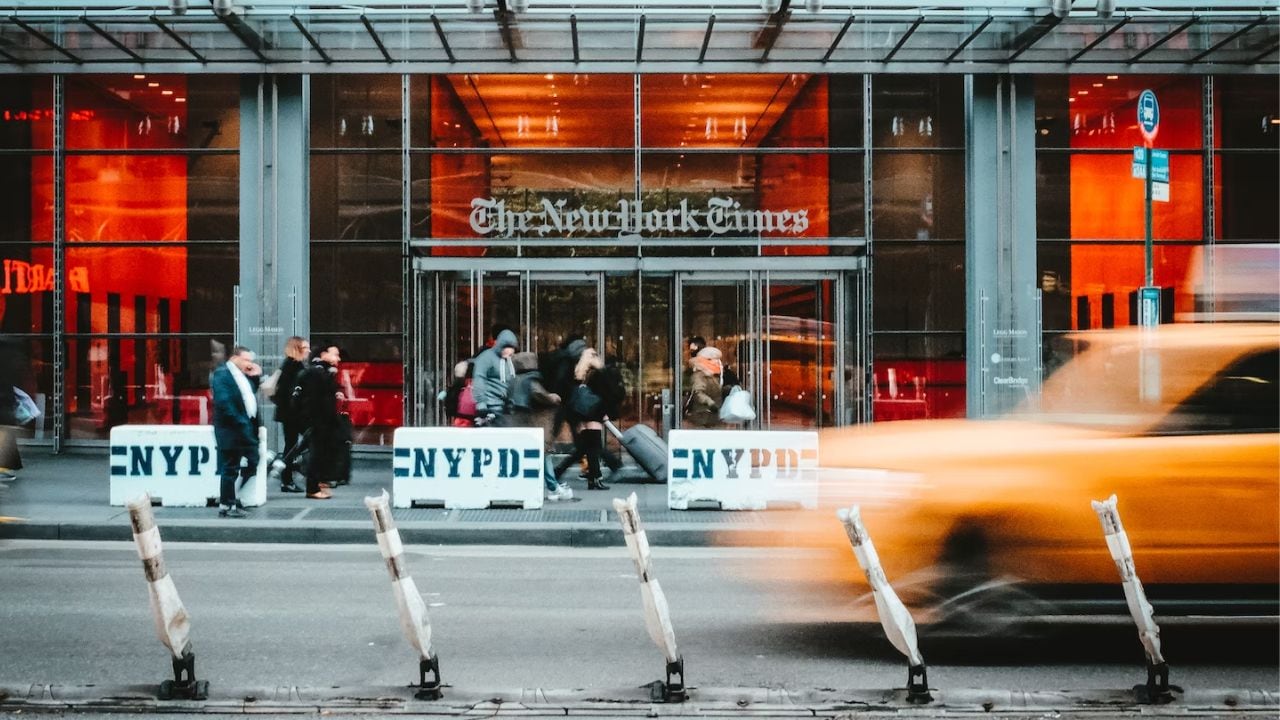The 69-page complaint filed by the New York Times Company (NYT) against AI engines may have far-reaching consequences as among other relief, the publisher of the eponymous newspaper is seeking destruction of all general-purpose technology or GPT and other large language models or LLMs (large language model) that have used content from The New York Times as datasets.
We list the relevant clauses of the NYT’s complaint against Microsoft and OpenAI.
Prayer for relief
The Times demands judgment against each defendant as follows:
1. Awarding the Times statutory damages, compensation damages, restitution, disgorgement and any other relief that may be permitted by law or equity;
2. Permanently enjoining the defendants from the unlawful, unfair and infringing conduct alleged herein;
3. Ordering the destruction under 17 USD 503(b) of all GPT or other LLM models and training sets that incorporate Times’ works;
While the prayer relating to unauthorised use and for payment of royalty may be a fair ask, the demand to destroy AI engines and treating them as competition to news and media agencies may have larger repercussions, particularly in respect to the growing use of AI and machine learning in diverse domains.
A closer look at the complaint suggests that NYT has sought for a jury trial in the suit, which is likely to involve careful examination of thousands of news reports and articles that the NYT claims be the owner of. For the reader’s benefit, in any copyright infringement suit, it is a prerequisite for the complainant (or the plaintiff) to prove ownership and the originality of each work that forms part of the legal proceedings, and that each of these works are substantially copied by the alleged infringer.
A similar approach would be taken in these proceedings as well. However, looking at the enormity of the copied works—”almost two centuries of high-quality, original, independent news authored by several thousand employees”, according to the suit—it would certainly be a herculean task for the complainant to stand a full-blown trial, where the issues regarding ownership and originality is likely to be examined at length by the defendants.
The issue is equally complicated for the defendants, Microsoft and OpenAI, who may prefer a summary proceedings, challenging the proceedings for lack of cause of action and a commonly invoked defence of fair use. Defendants may claim that the output is not in their control, but it is an admitted position that the output is based on the datasets fed by these entities. An all-encompassing defence based on fair use, use of non-copyrightable subject matter or matter, that is in the public domain, and due diligence can substantially dilute the plaintiffs’ copyright claim.
Another aspect of this dispute relates to copyright issues or proprietary rights in news and news based reports/articles. The issue relating to quasi-proprietary rights relating to news (breaking news, in particular) has been part of several legal proceedings including before the Supreme Court of India. In case the US Supreme Court rules in support of the proprietary claim in news, it would deviate from the trite law on non-copyrightable subject matter. Such issues are imminent for access to information and thus NYT’s copyright claims, particularly in respect to news, must be examined carefully. Also, if datasets are held to be adaptations of or based on NYT’s literary works, such a decision would overreach the copyright law itself.
Whether or not the plaintiffs would be able to justify their copyright infringement claim against OpenAI, the outcome of this proceeding would contribute to the growing jurisprudence relating to artificial intelligence and AI-generated works. Recently, the UK Supreme Court held that AI cannot claim ownership in patents, but this stand may be diluted if the apex US court decides to hold the defendants contributory liable for infringement in respect to the GPT’s output, thereby assuming a sort of quasi-personality rights in AI.
The complaint also refers to the existing licensing system, likely with the intent to create a potential revenue stream by way of licensing content to LLMs. It is quite possible that the parties would enter into a settlement, possibly a licence arrangement, to avoid any adverse outcome in the dispute and also to set a precedent for other related businesses to follow.
Subhash Bhutoria is the founder and principal at LAW SB. A seasoned Indian IP and art lawyer, in a career spanning over 15 years, Bhutoria has worked with leading lawyers and Indian law firms including Luthra and Luthra Law Offices and DSK Legal. He is an arbitrator with the court of arbitration for art, the Netherlands, and is a member of the European Communities Trademark Association and Intellectual Property Attorneys’ Association of India.
